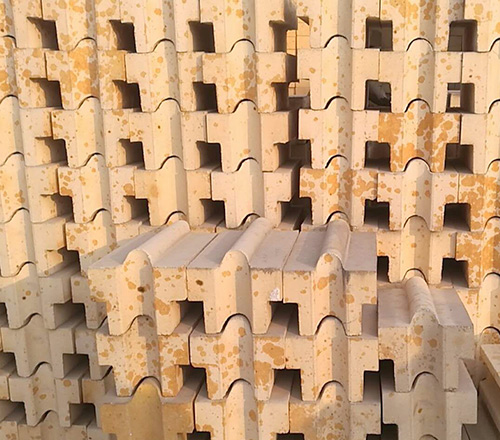- 20
- Apr
Basic introduction to the performance of silica bricks
Basic introduction to the performance of silica bricks

Silica brick is made of quartzite as the main material, and is fired at a high temperature of 1350-1430 ℃ with a binder forming well. It is a refractory brick product containing no less than 93% SiO2.
Silica brick is an acid refractory material, which has excellent resistance to acid slag corrosion. Its high softening point under load is close to its refractoriness, which is its greatest benefit.
During the firing process of silica bricks, most of the quartz with larger specific gravity is changed to cristobalite and tridymite with smaller specific gravity. The better the change, the less the remaining quartz, the smaller the true specific gravity of the silica brick. The smaller the residual swelling during use, the better the stability of the body stroke. Therefore, the specific gravity is one of the important indicators to indicate the degree of quartz change.
True and bulk density. The true density of silica brick is one of the important indicators to judge the degree of its crystal form modification. The true density of general silica bricks is less than 2.388/cm3, and the true density of high-quality silica bricks is 2.33-2.34g/cm3. Silica is 2.65g/cm3. The higher the degree of tridymite, the lower the true density of fired silica bricks. Therefore, the mineral composition of silica bricks can be judged according to the true density of silica bricks.
The bulk density of silica bricks is related to porosity. Generally, the apparent porosity of silica brick is 17%-25%, and the bulk density is 1.8-1.95g/cm3. The higher the molding pressure of the silica brick, the greater the bulk density. Increasing the bulk density can improve the structural strength, thermal conductivity and slag resistance of silica bricks.
Refractoriness. The refractoriness of silica brick is low, which is 1670-1730℃. According to the mass fraction, crystal form, type and quantity of impurities of SiO2, it is slightly changed, but not stable. The higher the mass fraction of SiO2 and the lower the mass fraction of impurities, the higher the refractoriness. Especially when the mass fraction of A12O3, K2O, Na2O increases, the refractoriness of silica brick decreases. All in all, the refractoriness of silica brick is not high and cannot meet the requirements of intensive training.
Although the refractoriness of silica brick is not very high, it has a high softening temperature under load, high structural strength at high temperature, and good stability when used for a long time above 600 °C, which can resist the corrosion of acid slag. Therefore, it is now mainly used for masonry glass furnaces and coke ovens. The coke oven carbonization chamber partition wall is built with silica brick, which has excellent stability and air tightness at high temperature, and the service life can reach 10-15 years, and if used properly, it can reach more than 25 years. Silica bricks were used as lining bricks for acid converters. The top of the electric furnace, the vault of the reverberatory furnace, the regenerator and the slag chamber were also widely used in the past to be built with silica bricks, but now they have been gradually replaced by high-alumina bricks and magnesia-alumina bricks.
During the heating and baking process of the kiln built with silica bricks, the temperature should be raised slowly to prevent the masonry from being damaged due to excessive expansion.
